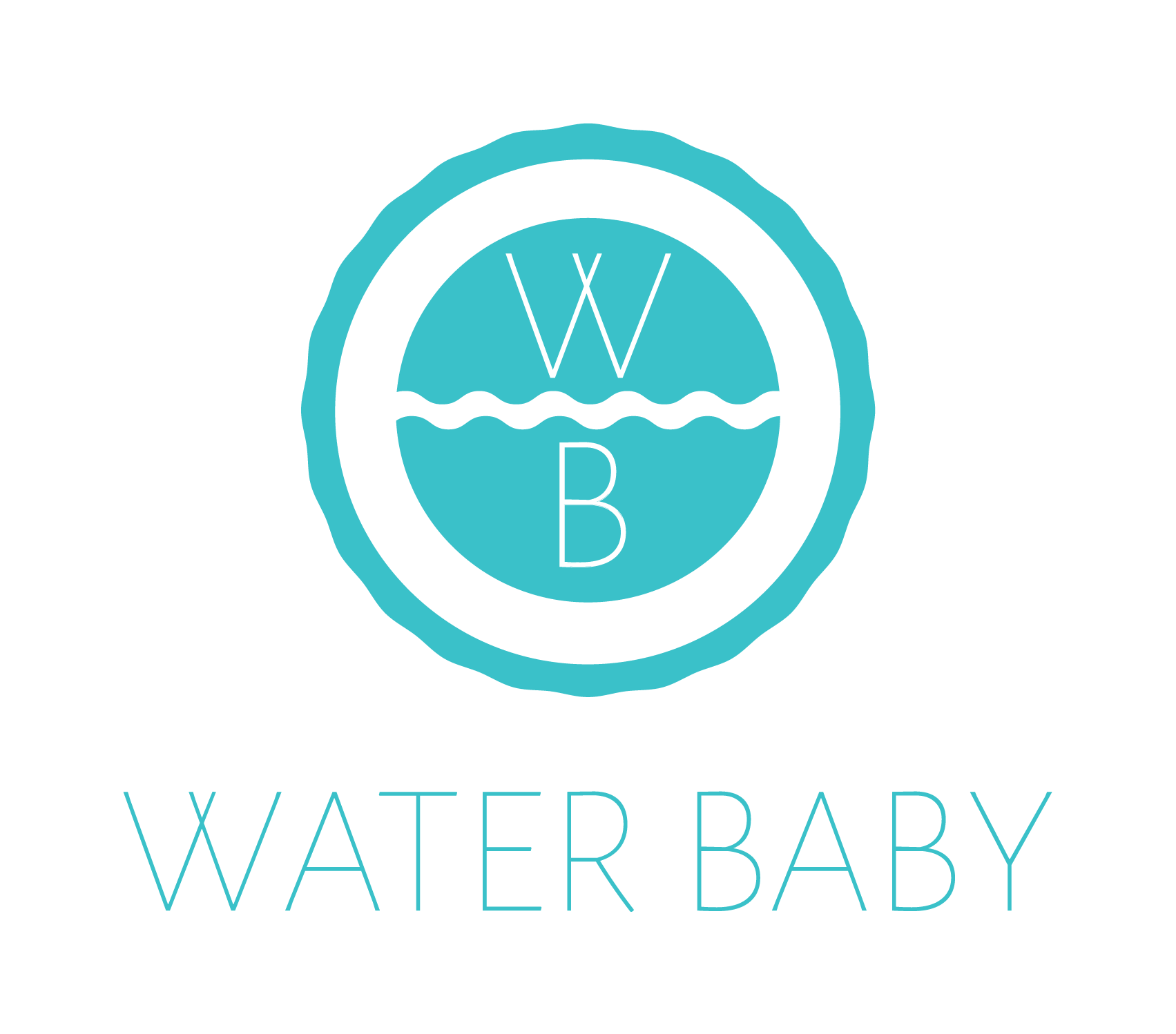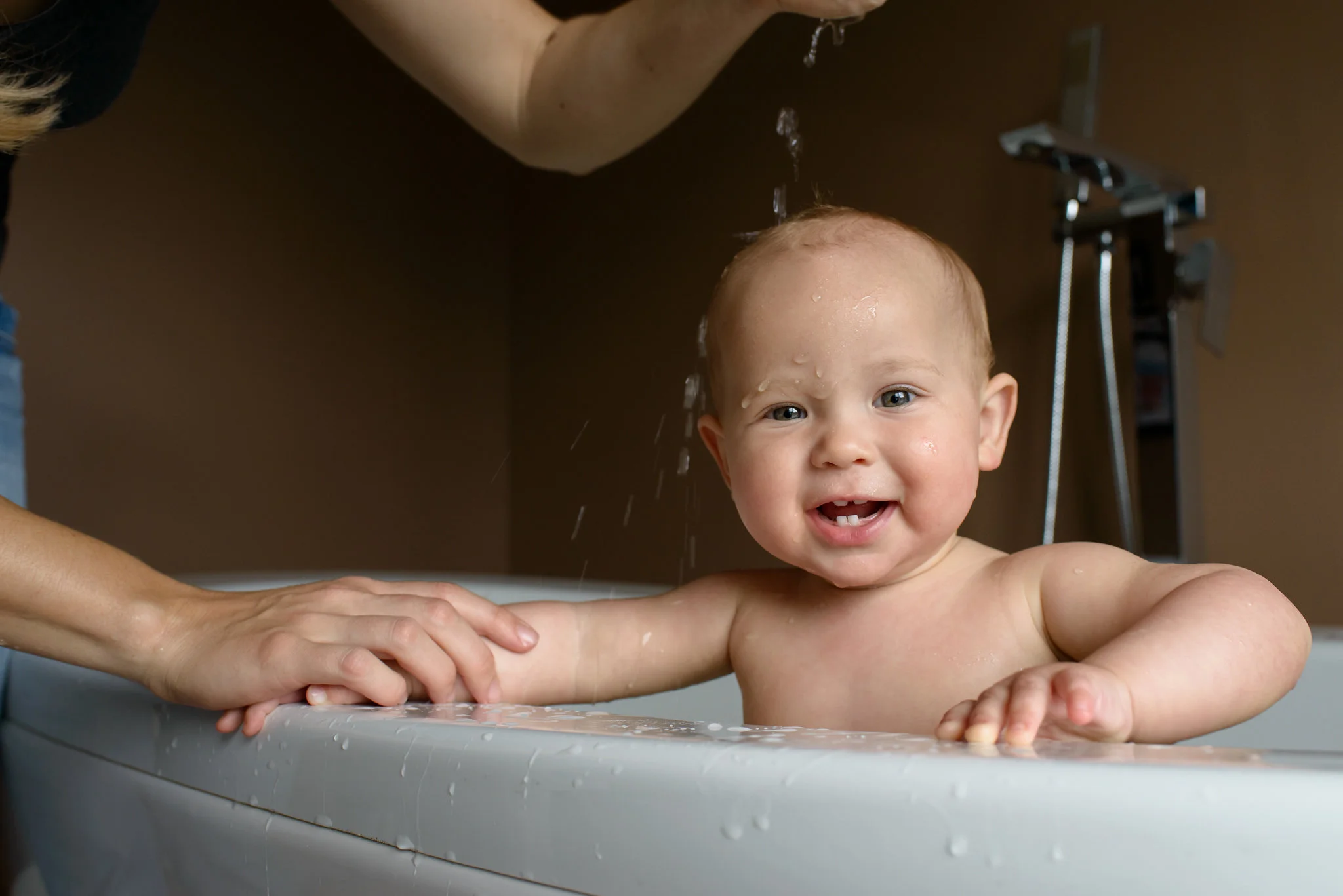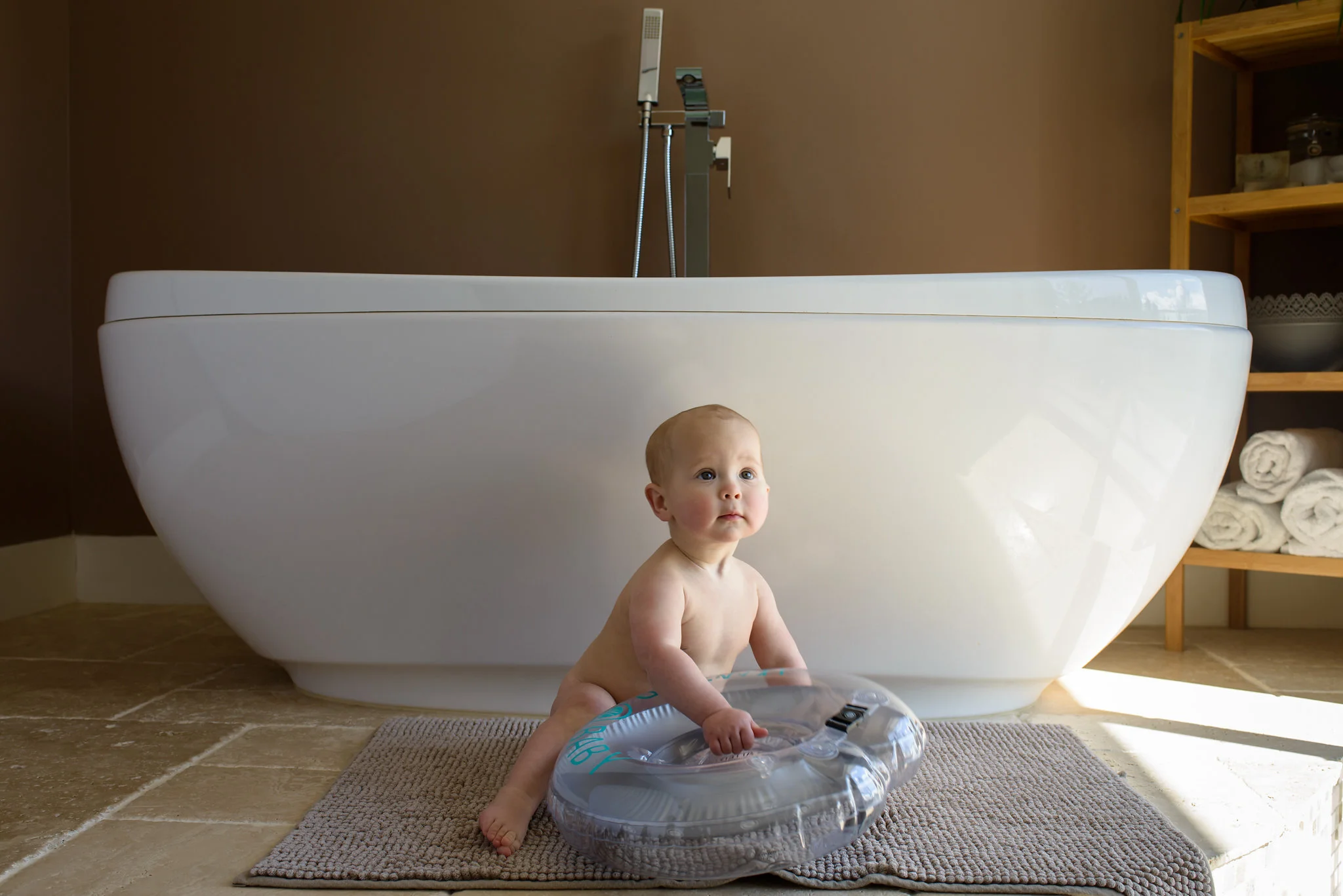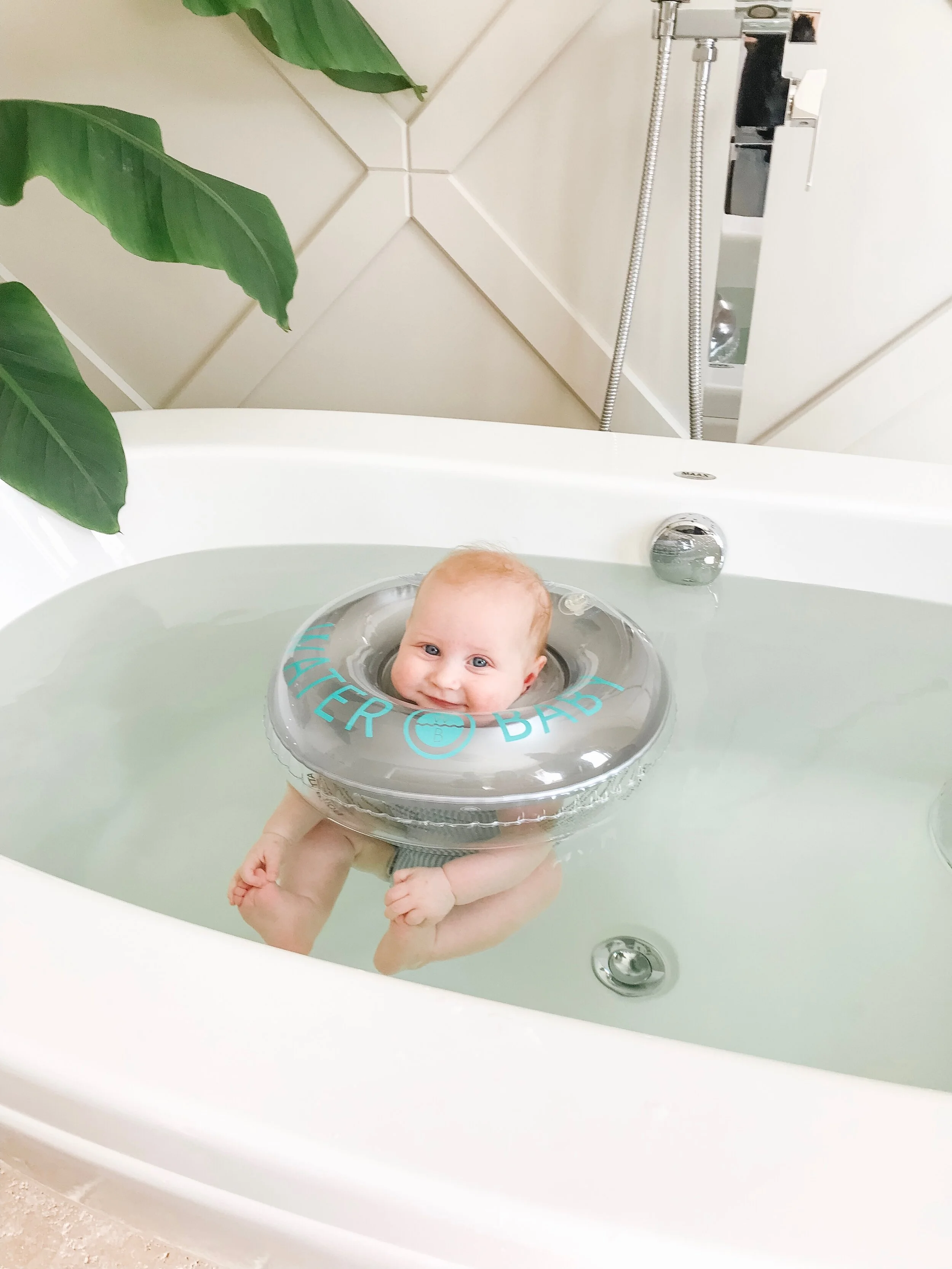How to Give a Newborn Baby a Bath
10 First Bath Tips for Your Water Baby
Baby’s first bath is such a fun milestone. However, it can be tricky and confusing for some parents if you haven’t bathed a newborn before. We’ve outlined our top 10 tips for making your baby’s first bath go as smoothly as possible.
Establish a routine. Whether you bath your baby every night or alternate between tub time and sponge baths, the routine will help your baby know that it’s almost bedtime. To help reinforce this message, dim the lights and keep the noise and activity down after the bath is over. Although bedtime baths are relaxing, other times of day are great for baths too!
2. Gather your supplies. Have everything you'll need at close by before you start. The number one rule when giving baby a bath is to NEVER leave baby alone. You should always be right by their side if they are in or near water. Be prepared by having everything close.
The essentials include:
baby soap and shampoo (or a product that does double duty)
at least two cotton washcloths
a hooded drying towel
a plastic basin filled with warm water
a clean diaper and a fresh pair of clothes
you may also want diaper ointment or body lotion too.
your partner or a friend or relative ready with the camera, especially if it's baby's very first bath.
3. Test the Temperature. Babies lose body heat very quickly — especially when they're naked — so make sure the bathing room is warm enough. Before you get started, you can turn up the thermostat or steam up the room by letting the shower run on hot for a few minutes. Whether you're using an infant tub or a sink, fill it first with just enough water to cover the bottom of your baby’s body. Never put a baby in while the water is still running. The water temperature should be comfortably warm, so test it with your elbow or the inside of your wrist, since those areas are more sensitive than your fingertips.
4. Pick your bath.
Sponge Bath.
The first bath will be a sponge bath. Pick a warm room with a flat surface, like a bathroom or kitchen counter, a changing table, or a bed. Cover the surface with a thick towel.
The Baby Bath Tub.
You need to have a safe and comfortable place for baby to sit and enjoy the water as you bathe them. I personally recommend doing the first bath in the sink so that baby is at counter height for you. Leaning over or bent on your knees is never a good place to start off your first bath with baby (especially postpartum!). Place an adult bath towel or your baby bath tub inside the sink to get started!
The Big Bathtub. Gently slide your baby into the tub, feet first, holding him securely with one of your arms under his head (use your hand to grasp his underarm farthest away from you) and the other supporting his bottom. He may be slippery as a fish, but you'll soon get the hang of how to hang on to him. You can use a bathmat or towel on the bottom of the tub so help make it less slippery.
The Floatie.
Water Baby neck floaties can be used from about 2 months old in the bath tub. Babies don’t need total neck control to use our floaties as their heads are comfortably supported by the chin rest and the inner air chamber. You’ll need enough water in the bath tub so that their feet are just touching the bottom.
5. Warm Wash Cloth
To help keep your baby warm during their bath, keep a warm, wet wash cloth on baby’s abdomen. Every now and then, pour some clean, warm water on the wash cloth or switch out the cloth to keep them warm.
6. Use soap sparingly. Use a mild soap on your baby’s hands and diaper area. You can just use water on the rest of the body most days, unless he or she is really dirty!
7. Scrub-a-dub dub
Focus on the face first. Dip a corner of the wash cloth in warm water and gently wipe one eye from the inner corner outward. Using a different corner of the cloth to clean the other eye. Wet the wash cloth entirely and wash your little one's face, especially around his mouth, under his chin, and in his neck creases where milk and drool can accumulate.
Wash baby's body. Next, wash your little one's torso and clean under his arms and between his fingers. Then clean his legs, feet and toes. Be sure to get into all of those little creases and skin folds. Lastly, clean his diaper area finishing off with his bum!
Wash the head last.
Baby’s lose heat the fastest from their heads. Once they get their head wet, they may get very cold and upset. Therefore, wash the head very last with a clean cloth.
If your baby has hair, you may wish to shampoo it with a tear-free baby shampoo. Be sure to rinse his hair and body well to get rid of any soap or shampoo. It likes to hide in the skin creases!
8. Hooded Towel
When he is all done his bath, get him dried off as quickly as possible. Place your hooded towel with the opposite end of the hooded part up on your shoulder and the hooded part pointing down. Then place your baby on you so that the towel is between you and the baby. Finally, pull the hooded part of the towel up and over his head.
9. Apply baby lotion sparingly and avoid powder.
Baby’s skin doesn’t often need much, if any, in the way of lotions, oils or creams. However, a small amount of baby-safe lotion is okay. Warm a small amount of hypoallergenic lotion between your palms and then massage it into his skin. After a bath is a great time for a relaxing massage for your baby. This give you another opportunity to bond and connect.
Avoid baby powders as they can irritate an infant’s breathing passages.
10. Diaper and dress. Put on a fresh diaper and get your baby dressed in some clean clothes. If he needs a little soothing after his bath, swaddle him and then get settled in for a snuggle with your clean, sweet-smelling baby. Most babies are ready for some milk and a sleep after a relaxing bath!
Once you’ve mastered the bath with your little one and are ready to venture to the pool, read all about our top tips for taking your little water baby swimming here: www.waterbaby.ca/waterbabyblog/top-10-tips-for-swimming



